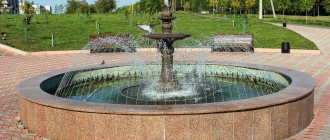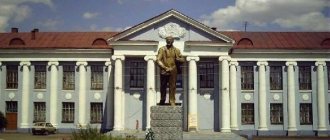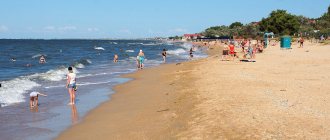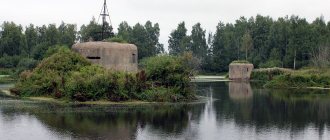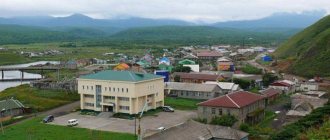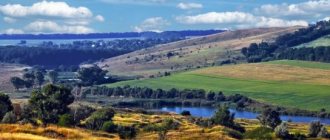| A country | Russia |
| Subject of the federation | Yaroslavl region |
| Municipal district | Nekrasovsky |
| Rural settlement | Nekrasovskoe |
| Timezone | UTC+4 |
| Telephone code | +7 48531 |
| PGT with | 1940 |
| Vehicle code | 76 |
| Population | 6164 people (2010) |
| Former names | Great Salt, Big Salts |
| First mention | 1214 |
| Postcode | 152260 |
| OKATO code | 78 226 551 |
| Coordinates | Coordinates: 57°40′00″ N. w. 40°22′00″ E. d. / 57.666667° n. w. 40.366667° E. d. (G) (O) (I)57°40′00″ n. w. 40°22′00″ E. d. / 57.666667° n. w. 40.366667° E. d. (G) (O) (I) |
Nekrasovskoye is an urban-type settlement, the administrative center of the Nekrasovsky district of the Yaroslavl region of Russia.
The population according to the 2010 census is 6,164 people.
It is located on the right bank of the Volga River at the confluence of the Solonitsa River, 45 km east of Yaroslavl, where the nearest railway station is located.
Content
- 1 Church of the Resurrection of Christ (Vyatskoye)
- 2 Church of the Annunciation of the Blessed Virgin Mary (Abbakumtsevo)
- 3 Church of St. Nicholas the Wonderworker (Bor)
- 4 Temple of the Smolensk Icon of the Mother of God (Dievo-Gorodishche)
- 5 Peter and Paul Church (Petropavlovskoye)
- 6 Temple of the Savior Not Made by Hands (Rybnitsa)
- 7 Resurrection Church (Burmakino)
- 8 Michael the Archangel Church (Kuvakino)
- 9 Resurrection Church (Levashovo)
- 10 Temple of the Icon of the Mother of God “Quench My Sorrows” (Nekrasovskoye)
- 11 Church of the Nativity of the Virgin Mary (Nekrasovskoye)
- 12 St. Nicholas Church (Netrebovo)
- 13 St. Nicholas Church (Nikolskoe)
- 14 Temple of Paraskeva Friday (Novodashkovo)
- 15 Trinity Church (New)
- 16 Church of the Nativity of the Virgin Mary (Pozdeevskoe)
- 17 Resurrection Church (Black Pond)
- 18 Smolensk Church (Dievo-Gorodishche)
- 19 Tikhvin Church (Timokhino)
home
Close
Chapter 2. Classification of information products
Article 6. Classification of information products
Information about changes:
Federal Law No. 139-FZ of July 28, 2012 amended Part 1 of Article 6 of this Federal Law
See the text of the part in the previous edition
Classification of information products is carried out by their producers and (or) distributors independently (including with the participation of an expert, experts and (or) expert organizations that meet the requirements of Article 17 of this Federal Law) before the start of their circulation on the territory of the Russian Federation.
2. When conducting research for the purpose of classifying information products, the following are subject to assessment:
1) its theme, genre, content and artistic design;
2) features of the perception of the information contained in it by children of a certain age category;
3) the likelihood of the information contained therein causing harm to the health and (or) development of children.
Information about changes:
Federal Law No. 139-FZ of July 28, 2012 amended Part 3 of Article 6 of this Federal Law
See the text of the part in the previous edition
3. Classification of information products is carried out in accordance with the requirements of this Federal Law into the following categories of information products:
1) information products for children under six years of age;
2) information products for children over the age of six;
3) information products for children over the age of twelve;
4) information products for children over the age of sixteen;
5) information products prohibited for children (information products containing information provided for in Part 2 of Article 5 of this Federal Law).
GUARANTEE:
On determining the age limit for the main television program, taking into account the content of the ticker messages, see the information of Roskomnadzor dated January 22, 2013.
Information about changes:
Federal Law of July 2, 2013 N 185-FZ, Part 4 of Article 6 of this Federal Law is set out in a new wording, which comes into force on September 1, 2013.
See the text of the part in the previous edition
4. Classification of information products intended and (or) used for teaching and raising children in organizations carrying out educational activities in the implementation of basic general education programs, educational programs of secondary vocational education, additional general education programs is carried out in accordance with this Federal Law and the legislation on education .
Information about changes:
Federal Law No. 139-FZ of July 28, 2012 amended Part 5 of Article 6 of this Federal Law
See the text of the part in the previous edition
5. Classification of films is carried out in accordance with the requirements of this Federal Law and the legislation of the Russian Federation on state support of cinematography.
Information about changes:
Federal Law No. 139-FZ of July 28, 2012 amended Part 6 of Article 6 of this Federal Law
See the text of the part in the previous edition
6. Information obtained as a result of classification of information products is indicated by its manufacturer or distributor in accompanying documents for information products and is the basis for placing the information product mark on it and for its circulation on the territory of the Russian Federation.
Article 7. Information products for children under six years of age
Information products for children under the age of six may include information products containing information that does not cause harm to the health and (or) development of children (including information products containing episodic non-naturalistic images justified by its genre and (or) plot or a description of physical and (or) mental violence (with the exception of sexual violence), subject to the triumph of good over evil and expression of compassion for the victim of violence and (or) condemnation of violence).
Article 8. Information products for children over the age of six
Information products permitted for circulation for children over the age of six years may include information products provided for in Article 7 of this Federal Law, as well as information products containing justified by its genre and (or) plot:
1) short-term and non-naturalistic images or descriptions of human diseases (except for serious diseases) and (or) their consequences in a form that does not degrade human dignity;
2) non-naturalistic depiction or description of an accident, accident, catastrophe or non-violent death without demonstrating their consequences, which may cause fear, horror or panic in children;
3) episodic depictions or descriptions of these actions and (or) crimes that do not encourage the commission of antisocial actions and (or) crimes, provided that their admissibility is not substantiated or justified and a negative, condemning attitude towards the persons committing them is expressed.
Article 9. Information products for children over the age of twelve
Information products permitted for circulation for children over the age of twelve may include information products provided for in Article 8 of this Federal Law, as well as information products containing justified by its genre and (or) plot:
1) episodic depiction or description of cruelty and (or) violence (except for sexual violence) without a naturalistic demonstration of the process of taking life or causing injury, provided that compassion is expressed for the victim and (or) a negative, condemning attitude towards cruelty, violence (except violence used in cases of protecting the rights of citizens and legally protected interests of society or the state);
2) an image or description that does not encourage the commission of antisocial actions (including the consumption of alcohol and alcohol-containing products, beer and drinks made on its basis, participation in gambling, vagrancy or begging), occasional mention (without demonstration) of drugs drugs, psychotropic and (or) intoxicating substances, tobacco products, provided that the admissibility of antisocial actions is not substantiated or justified, a negative, condemning attitude towards them is expressed and an indication of the danger of consuming these products, drugs, substances, products is contained;
3) episodic non-naturalistic images or descriptions of sexual relations between a man and a woman that do not exploit interest in sex and are not of an exciting or offensive nature, with the exception of images or descriptions of actions of a sexual nature.
Article 10. Information products for children over the age of sixteen
Information products permitted for circulation for children who have reached the age of sixteen may include information products provided for in Article 9 of this Federal Law, as well as information products containing justified by its genre and (or) plot:
1) an image or description of an accident, accident, catastrophe, disease, death without a naturalistic showing of their consequences, which can cause fear, horror or panic in children;
2) depiction or description of cruelty and (or) violence (except for sexual violence) without a naturalistic demonstration of the process of taking life or causing injury, provided that compassion for the victim and (or) a negative, condemning attitude towards cruelty, violence (except for violence) is expressed applied in cases of protection of the rights of citizens and legally protected interests of society or the state);
3) information about narcotic drugs or psychotropic and (or) intoxicating substances (without their demonstration), about the dangerous consequences of their consumption with demonstration of such cases, provided that a negative or condemning attitude towards the consumption of such drugs or substances is expressed and an indication is given the danger of their consumption;
4) individual swear words and (or) expressions that are not related to obscene language;
5) images or descriptions of sexual relations between a man and a woman that do not exploit the interest in sex and are not offensive in nature, with the exception of images or descriptions of actions of a sexual nature.
Church of the Resurrection of Christ (Vyatskoye)[edit]
Brick church built in 1750 in the spirit of traditional architecture. A tall five-domed quadrangle with a belt of kokoshniks under the cornice, with an extensive refectory and a very slender pillar-shaped hipped bell tower. The decor is in the spirit of the 17th century. In the refectory are the chapels of Michael the Archangel and Gregory the Theologian. It didn't close.
Vyatskoye was one of the largest and richest villages in the northeastern part of the Yaroslavl province, with interestingly well-preserved stone buildings of the 19th century.
Address:
Russia, Yaroslavl region, Nekrasovsky district, Vyatskoye village, Davydkovskaya street
Telephone
: 8 48531 644 73
Population
| Population | ||||||
| 1959[6] | 1970[7] | 1979[8] | 1989[9] | 2002[10] | 2007[11] | 2009[12] |
| 3039 | ↗4615 | ↗4946 | ↗6950 | ↘6489 | ↘6222 | ↘6193 |
| 2010[13] | 2011[14] | 2012[15] | 2013[16] | 2014[17] | 2015[18] | 2016[1] |
| ↘6154 | ↗6200 | ↘6027 | ↗6063 | ↘6041 | ↘6000 | ↘5904 |
Church of the Annunciation of the Blessed Virgin Mary (Abbakumtsevo)[edit]
Church of the Annunciation of the Blessed Virgin Mary
- temple of the Yaroslavl diocese of the Russian Orthodox Church.
The Annunciation Church is the main architectural structure of the village of Abakumtseva. This stone temple was built in 1791 on the eastern outskirts of the village in the style of early classicism. To the chapel of Peter and Paul, which was in the wooden church, another chapel was added - the Archangel Michael. The interior of the Annunciation Church is decorated with oil wall paintings made in 1845, a three-tiered iconostasis with gilded carvings on a white background in the late Baroque style, and a floor made of cast iron slabs. The church had a library that was used by church parishioners.
Address
: Russia, Yaroslavl region, Nekrasovsky district, Abbakumtsevo village.
Telephone:
+7 (48531) 35 35 86
Temple of the Smolensk Icon of the Mother of God (Dievo-Gorodishche)[edit]
The Church of the Smolensk Icon of the Mother of God “Hodegetria” in the village of Dievo-Gorodishche was built in the 1860-1880s on the site of an old brick building.
The main volume was built in 1877-1884, but is designed in the spirit of traditional architecture. A two-story, five-domed quadrangle with an extended refectory and a multi-tiered bell tower.
During the Soviet years, the temple was not closed.
Address
: Russia, Yaroslavl region, Nekrasovsky district, village of Dievo-Gorodishche
Telephone:
+7 (48531) 356 38
Economy
The main enterprises of the village: a machine-building plant (produces technological equipment and spare parts for the food industry), a roofing materials plant, the Nekrasovskaya Confectionery Factory (formerly a dairy plant), and the Nekrasovskaya Sewing Factory.
Nekrasovskoye is a famous resort based on deposits of healing mineral water (there are sanatoriums and a SPA hotel, the most famous are the Malye Soli Sanatorium (www.msoli.ru), the Bolshie Soli Medical Rehabilitation Center[4][5]).
Peter and Paul Church (Petropavlovskoe)[edit]
Peter and Paul Church
in the village of Ptrovskoye is a brick church built in 1802. A two-height quadrangle, completed with a five-domed structure, with an extensive four-pillar, two-height refectory, expanded at the end. XIX - early XX centuries and a four-tiered bell tower. The chapels of Vvedensky and Tikhon of Amafuntsky. Closed no earlier than the late 1930s.
In 1992 it was returned to believers and is being restored.
Address
: Russia, Yaroslavl region, Nekrasovsky district, Petropavlovskoye village
Telephone:
+7 (905) 634 91 36
Temple of the Savior Not Made by Hands (Rybnitsa)[edit]
Temple of the Savior Not Made by Hands
in the village of Rybnitsa - a brick church, built in 1789-1791 at the expense of the peasant K. M. Kuskov and others in the spirit of traditional architecture. A five-domed quadrangle with a two-aisle refectory and a multi-tiered bell tower in the style of classicism. Chapels in the refectory of Nikolsky and Kirill Novoezersky. Closed in 1961. Returned to believers in 1993, slowly being renovated.
Address
: Russia, Yaroslavl region, Nekrasovsky district, village of Rybnitsy
Telephone:
+7(905) 634 91 36
Transport
The Yaroslavl - Kostroma highway with intercity bus service runs through the territory of the district (Malye Soli, Levashovo, Pesochnoe). The Yaroslavl - Lyubim highway runs through the northwestern part of the region (bus routes to Yaroslavl, Danilov, Sereda, Zakobyakino, Lyubim).
There are bus stations in the villages of Nekrasovskoye (routes to Yaroslavl, Kostroma and populated areas on the right bank of the region) and Krasny Profintern (routes along the left bank of the region, as well as to Yaroslavl).
In recent years, a taxi service has appeared, which operates both within the region and intercity.
During navigation there is a ferry crossing across the river. Volga between the village. Krasny Profintern (left bank) and the village of Novodashkovo (right bank). In the absence of a ferry (winter inter-navigation period, problems with financing), road communication between the two parts of the region is possible only through Yaroslavl (until the mid-1990s, there was a road crossing on the ice of the Volga River).
In the village Burmakino is a railway station on the Northern Railway. Suburban trains stop (to Yaroslavl, Nerekhta, Kostroma, Ivanovo) and long-distance trains (to Moscow, Kostroma, Khabarovsk, St. Petersburg, Ivanovo, Samara, Ufa, Nizhny Novgorod, and in the summer also to Adler and Anapa).
The village of Lomovskaya in the summer is connected by air with the Kostroma region (Mi-2 helicopter, twice a week).
The road surface has been in a disgusting condition for many years.
Michael the Archangel Church (Kuvakino)[edit]
Michael the Archangel Church
The village of Kuvakino belongs to the Yaroslavl Metropolis, Yaroslavl Diocese, Nekrasovsky Deanery District of the Russian Orthodox Church.
A brick church with decoration in the spirit of traditional architecture, built in 1777. A two-story, five-domed quadrangle with a semicircular altar, a small refectory and a pillar-shaped hipped bell tower. The refectory housed the Nikolsky chapel. Closed in 1936, abandoned by the 1990s. Restored since 2002.
Address
: Russia, Yaroslavl region, Nekrasovsky district, Kuvakino village
Resurrection Church (Levashovo)[edit]
Resurrection Church
The village of Levashovo belongs to the Yaroslavl Metropolis, Yaroslavl Diocese, Nekrasovsky Deanery District.
It is quite rare for its era, a two-foot, five-domed and tripartite, brick temple of considerable size, with a tiered, characteristically baroque bell tower. In the 17th century, temples of this type were found in the North and Kostroma region, and in the 18th century they became a unique phenomenon. The monument is an outstanding work of church architecture of the 18th century, making a great contribution to the history of Russian architecture
Address
: Russia, Yaroslavl region, Nekrasovsky district, st. Postal
Telephone:
8 910 822 33 16
Notable natives
- Volkov, Alexander Pavlovich - Hero of the Soviet Union, born in the village. Malye Soli in 1922
- Egorov, Sergei Andreevich - Hero of the Soviet Union, born in the village. Vyatskoe in 1899
- Elizarov, Alexey Konstantinovich - Ukrainian Soviet cinematographer, born in the village of Ermoltsino in 1916
- Karabulin, Nikolai Mikhailovich - Hero of the Soviet Union, born in the village of Tarhanka in 1918
- Kastorsky, Vladimir Ivanovich - Russian opera singer (bass), born in the village. Big Salts in 1871
- Matrosov, Ivan Konstantinovich - inventor, creator of railway automatic brake systems, was born in the village. Malye Soli in 1886
- Libizov, Mikhail Pavlovich - scientist, is the founder of the method of breeding pigs along lines, born in the village of Basova in 1903[33][34][35]
- Opekushin, Alexander Mikhailovich - Russian sculptor, born in the village of Svechkino in 1838.
- Purgin, Nikolai Ivanovich - Hero of the Soviet Union, born in the village. Levashovo in 1923
- Rudkin, Yuri Dmitrievich - judge of the Constitutional Court of Russia, born in the village. Burmakino in 1951
- Sakharov, Nikolai Ivanovich - chess bibliographer, born in the village. Vyatskoe in 1921
- Tolbukhin, Fedor Ivanovich - Marshal of the Soviet Union, Hero of the Soviet Union, born in the village of Androniki in 1894
- Shilkov, Alexander Anfimovich - Hero of the Soviet Union, born in the village of Burakhino in 1915.
- Lednev, Ivan Vasilievich - Hero of the Soviet Union, born in the village. Netrebovo August 11, 1910
Temple of the Icon of the Mother of God “Quench My Sorrows” (Nekrasovskoye)[edit]
The Church of the Icon of the Mother of God “Quiet My Sorrows” was built in 1839-1844 at the expense of parishioners and priest I.A. Nazansky.
In 1843, the temple was painted by Bolshesolsk artists E. Sorokin and I. Shvarev. The three-tier iconostasis was made in the 1840s by Moscow craftsmen. The temple icon “Assuage My Sorrows” was painted by the artist N. Bazhenov.
The temple did not close during the Soviet years.
Address
: Russia, Yaroslavl region, Nekrasovsky district, Nekrasovskoye village
Church of the Nativity of the Virgin Mary (Nekrasovskoye)[edit]
The Church of the Nativity of the Virgin Mary was built at the end of the 17th century at the expense of the merchant Melnikov on the site of a dilapidated wooden church. Consecrated in 1700. The temple is a five-domed stone church with a bell tower built by the Bolshesolsk architect Stepan Andreevich Vorotilov (lost in the late 1930s). The temple was painted in 1710-1711. Yaroslavl artists Ignatiev, Fedotov and others (there is a mark on the wall of the temple). AND
The temple was closed in 1937. Used as a warehouse until 1996, returned to believers.
Hieromartyr Alexander Bolshesolsky (Pozdeevsky) served in the church.
Address
: Russia, Yaroslavl region, Nekrasovsky district, Nekrasovskoye village, st. Embankment
Smolensk Church (Dievo-Gorodishche)[edit]
[[Abstract:: Church of the Nativity
rebuilt in 1877-1884. It has two chapels: the Three Saints and St. Andrew of Crete.
The temple's miraculous icon of the Smolensk Mother of God enjoys special veneration among parishioners.
The temple was built in close proximity to the Volga and is designed primarily for viewing from a medium and long distance. His slender silhouette is clearly drawn against the background of the sky and the endless expanses of the Volga. At the foot of the temple, a brick church fence from the late 19th century with an entrance gate and an ancient rural cemetery have been preserved.
The temple was never closed.
Address
: Russia, Yaroslavl region, Nekrasovsky district, village of Dievo-Gorodishche, 2nd Butyrskaya street
An excerpt characterizing the Nekrasovsky district
- No news from Mac? – asked Kozlovsky. - No. “If it were true that he was defeated, then the news would come.” “Probably,” said Prince Andrei and headed towards the exit door; but at the same time, a tall, obviously visiting, Austrian general in a frock coat, with a black scarf tied around his head and with the Order of Maria Theresa around his neck, quickly entered the reception room, slamming the door. Prince Andrei stopped. - General Chief Kutuzov? - the visiting general quickly said with a sharp German accent, looking around on both sides and walking without stopping to the office door. “The general in chief is busy,” said Kozlovsky, hastily approaching the unknown general and blocking his path from the door. - How would you like to report? The unknown general looked contemptuously down at the short Kozlovsky, as if surprised that he might not be known. “The general in chief is busy,” Kozlovsky repeated calmly. The general's face frowned, his lips twitched and trembled. He took out a notebook, quickly drew something with a pencil, tore out a piece of paper, gave it to him, walked quickly to the window, threw his body on a chair and looked around at those in the room, as if asking: why are they looking at him? Then the general raised his head, craned his neck, as if intending to say something, but immediately, as if casually starting to hum to himself, he made a strange sound, which immediately stopped. The door to the office opened, and Kutuzov appeared on the threshold. The general with his head bandaged, as if running away from danger, bent down and approached Kutuzov with large, fast steps of his thin legs. “Vous voyez le malheureux Mack, [You see the unfortunate Mack.],” he said in a broken voice. The face of Kutuzov, standing in the doorway of the office, remained completely motionless for several moments. Then, like a wave, a wrinkle ran across his face, his forehead smoothed out; He bowed his head respectfully, closed his eyes, silently let Mac pass by him and closed the door behind himself. The rumor, already spread before, about the defeat of the Austrians and the surrender of the entire army at Ulm, turned out to be true. Half an hour later, adjutants were sent in different directions with orders proving that soon the Russian troops, which had hitherto been inactive, would have to meet the enemy. Prince Andrei was one of those rare officers at the headquarters who believed his main interest was in the general course of military affairs. Having seen Mack and heard the details of his death, he realized that half of the campaign was lost, understood the difficulty of the position of the Russian troops and vividly imagined what awaited the army, and the role that he would have to play in it. Involuntarily, he experienced an exciting, joyful feeling at the thought of disgracing arrogant Austria and the fact that in a week he might have to see and take part in a clash between the Russians and the French, for the first time since Suvorov. But he was afraid of the genius of Bonaparte, who could be stronger than all the courage of the Russian troops, and at the same time could not allow shame for his hero. Excited and irritated by these thoughts, Prince Andrei went to his room to write to his father, to whom he wrote every day. He met in the corridor with his roommate Nesvitsky and the joker Zherkov; They, as always, laughed at something. -Why are you so gloomy? – Nesvitsky asked, noticing the pale face of Prince Andrei with sparkling eyes. “There’s no point in having fun,” Bolkonsky answered. While Prince Andrei met with Nesvitsky and Zherkov, on the other side of the corridor, Strauch, an Austrian general who was at Kutuzov’s headquarters to monitor the food supply of the Russian army, and a member of the Gofkriegsrat, who had arrived the day before, walked towards them. There was enough space along the wide corridor for the generals to freely disperse with three officers; but Zherkov, pushing Nesvitsky away with his hand, said in a breathless voice: “They’re coming!... they’re coming!... step aside, get out of the way!” please the way! The generals passed by with an air of desire to get rid of bothersome honors. The face of the joker Zherkov suddenly expressed a stupid smile of joy, which he seemed unable to contain. “Your Excellency,” he said in German, moving forward and addressing the Austrian general. – I have the honor to congratulate you. He bowed his head and awkwardly, like children learning to dance, began to shuffle first with one foot and then with the other. The general, a member of the Gofkriegsrat, looked sternly at him; without noticing the seriousness of the stupid smile, he could not refuse a moment’s attention. He narrowed his eyes to show that he was listening. “I have the honor to congratulate you, General Mack has arrived, he’s completely healthy, he just got a little sick,” he added, beaming with a smile and pointing to his head. The general frowned, turned away and walked on. – Gott, wie naiv! [My God, how simple it is!] - he said angrily, walking away a few steps. Nesvitsky hugged Prince Andrei with laughter, but Bolkonsky, turning even paler, with an angry expression on his face, pushed him away and turned to Zherkov. The nervous irritation into which the sight of Mack, the news of his defeat and the thought of what awaited the Russian army led him, found its outcome in anger at Zherkov’s inappropriate joke. “If you, dear sir,” he spoke shrilly with a slight trembling of his lower jaw, “want to be a jester, then I cannot prevent you from doing so; but I declare to you that if you dare to make fun of me in my presence another time, then I will teach you how to behave. Nesvitsky and Zherkov were so surprised by this outburst that they silently looked at Bolkonsky with their eyes open. “Well, I just congratulated,” said Zherkov. – I’m not joking with you, please remain silent! - Bolkonsky shouted and, taking Nesvitsky by the hand, walked away from Zherkov, who could not find what to answer. “Well, what are you talking about, brother,” Nesvitsky said calmingly. - Like what? - Prince Andrei spoke, stopping from excitement. - Yes, you must understand that we are either officers who serve our tsar and fatherland and rejoice in the common success and are sad about the common failure, or we are lackeys who do not care about the master’s business. Quarante milles hommes massacres et l'ario mee de nos allies detruite, et vous trouvez la le mot pour rire,” he said, as if cementing his opinion with this French phrase. - C'est bien pour un garcon de rien, comme cet individu, dont vous avez fait un ami, mais pas pour vous, pas pour vous. [Forty thousand people died and the army allied to us was destroyed, and you can joke about it. This is forgivable for an insignificant boy like this gentleman whom you made your friend, but not for you, not for you.] Boys can only have fun like this,” said Prince Andrei in Russian, pronouncing this word with a French accent, noting that Zherkov could still hear him. He waited to see if the cornet would answer. But the cornet turned and left the corridor. The Pavlograd Hussar Regiment was stationed two miles from Braunau. The squadron, in which Nikolai Rostov served as a cadet, was located in the German village of Salzenek. The squadron commander, captain Denisov, known throughout the cavalry division under the name Vaska Denisov, was allocated the best apartment in the village. Junker Rostov, ever since he caught up with the regiment in Poland, lived with the squadron commander. On October 11, the very day when everything in the main apartment was raised to its feet by the news of Mack's defeat, at the squadron headquarters, camp life calmly went on as before. Denisov, who had lost all night at cards, had not yet come home when Rostov returned from foraging early in the morning on horseback. Rostov, in a cadet's uniform, rode up to the porch, pushed his horse, threw off his leg with a flexible, youthful gesture, stood on the stirrup, as if not wanting to part with the horse, finally jumped off and shouted to the messenger. “Ah, Bondarenko, dear friend,” he said to the hussar who rushed headlong towards his horse. “Lead me out, my friend,” he said with that brotherly, cheerful tenderness with which good young people treat everyone when they are happy. “I’m listening, your Excellency,” answered the Little Russian, shaking his head cheerfully. - Look, take it out well! Another hussar also rushed to the horse, but Bondarenko had already thrown over the reins of the bit. It was obvious that the cadet spent a lot of money on vodka, and that it was profitable to serve him. Rostov stroked the horse’s neck, then its rump, and stopped on the porch. “Nice! This will be the horse!” he said to himself and, smiling and holding his saber, ran up onto the porch, rattling his spurs. The German owner, in a sweatshirt and cap, with a pitchfork with which he was clearing out manure, looked out of the barn. The German's face suddenly brightened as soon as he saw Rostov. He smiled cheerfully and winked: “Schon, gut Morgen!” Schon, gut Morgen! [Wonderful, good morning!] he repeated, apparently finding pleasure in greeting the young man.
Tikhvin Church (Timokhino)[edit]
Church of the Transfiguration of the Lord
in the village of Timokhino is a brick church, built in 1797 at the expense of the peasant S. N. Zherekhov (Sherekhov). A two-story, five-domed quadrangle with baroque decor, with a refectory and a bell tower. The chapels in the refectory are Mikhail-Arkhangelsk and Varvarinsky.
Closed in 1950, later partially dismantled. To this day, only the quadrangle of the cold temple has survived, now empty.
Address
: Russia, Yaroslavl region, Nekrasovsky district, Timokhino village

